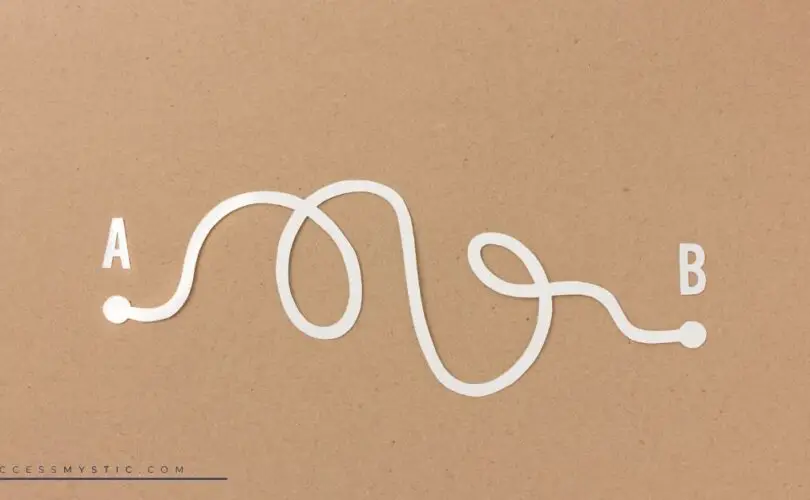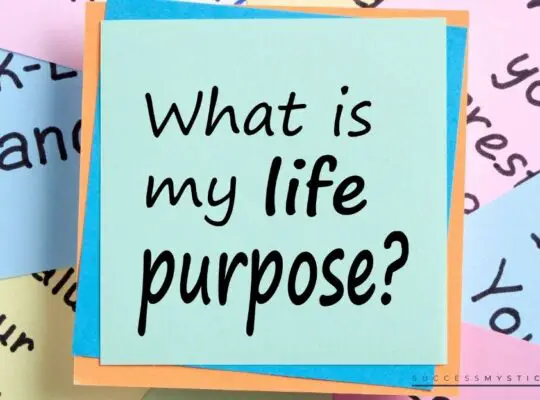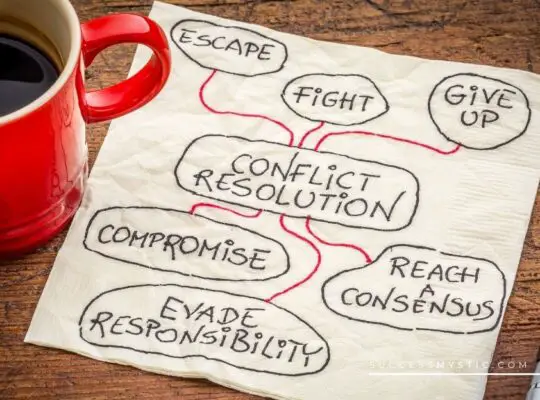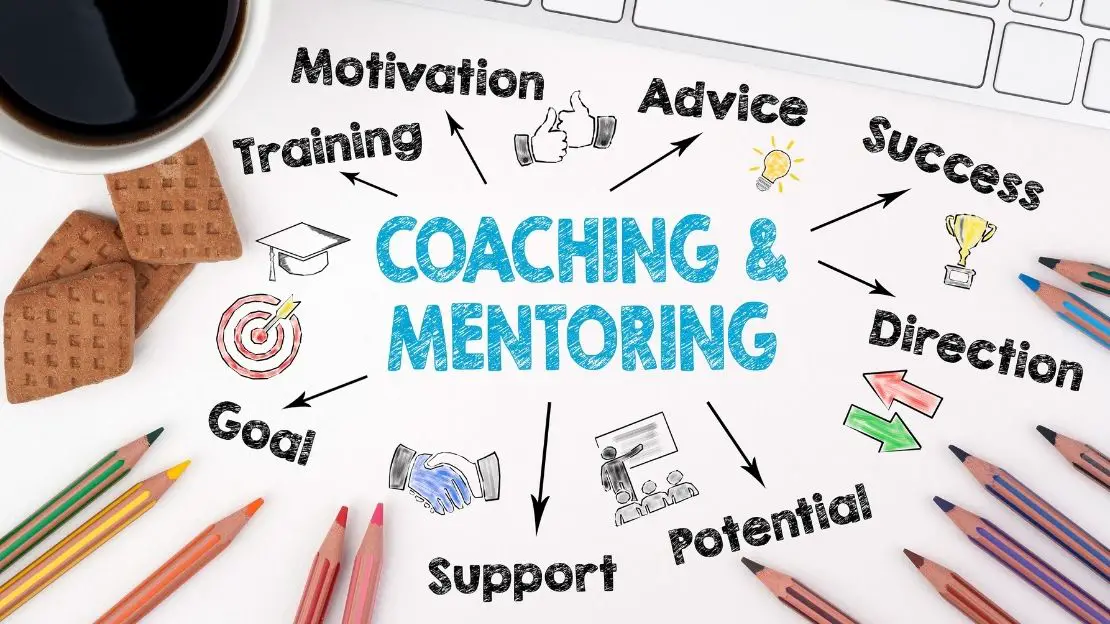Sometimes it seems as though stress is inevitable. There is just so much on your plate and so much going on around you that feeling stressed every day is your reality. Stress generally stems from feeling out of control over the situations you find yourself in. So, it makes sense that creating a solid foundation of stress management involves finding some semblance of control.
Whether it’s your thoughts, feelings, lifestyle or something else. The truth is, while there are some stresses that you can’t control, there are ways to effectively manage your stress. One of the most effective ways to do this is by honing your problem-solving skills.
Why Stress Management Is Important
Are you living with stress? Is it constant and never-ending? Chronic stress puts your health at risk, and not just your mental health. It’s your physical health that’s in play, too, when you are under chronic stress. It wreaks total havoc on your overall health and wellbeing. It limits your ability to function, to think clearly, and basically just enjoy your life.
Here’s the thing – sometimes we deal with short-term stress in life and that’s normal and it’s okay. In fact, it can even be healthy. However, chronic stress persists, and it invades every aspect of your life. One stressful day at work is a bad day. A stressful week can start to impact on your ability to sleep. It can affect your mood and leave you irritable and reacting angrily to normal events. That kind of stress can spiral out of control and infect your happiness and health in every aspect of your life.
Learning how to effectively manage stress will help relieve some of that pressure and release the hold that stress has had on your life. Which means you will not only be more productive and happier, but you will be healthier, too. Really, the ultimate goal for everyone is to strike the perfect balance between working life, home life, and relaxation.
It helps when you have the ability to tackle challenges and deal well under pressure. However, your stress management might look different than mine does. We are all very different people, so different things will work better for some than others.
There is one fix that does fit all, though. Problem solving.
Honing those skills can have a massive impact on your career, home life, and really, in every aspect of your life. At the center of so many of our stresses lies a problem. If we had the capability to solve that problem, then we would be able to navigate life’s challenges more effectively. Problems are a fundamental part of life and so being able to solve them is just as vital.
Four Basic Steps To Solve A Problem
There are four basic steps involved when tackling a problem.
- Before you solve the problem you first must define it.
- Once you have defined a problem you can start to generate ideas and alternatives.
- You are now faced with a variety of alternatives to choose from, so step three is evaluating them and selecting the right one for your issue.
- The fourth and final step is the implementationof your chosen solution.
It sounds simple, doesn’t it? Don’t worry, we will go into more detail on these steps later.
All you need to do to manage stress is to apply these four steps in every stressful situation. Simple… but, it’s not, is it?
You know that solving a problem is the key to relieving your stress and managing the impact it has on you emotionally and physically. Just take the right steps to deal with the problem or find a way to cope with it. Here’s the thing – we all pick up battle scars as we make our way through life and some of us are better built to cope with stress and challenges.
You are going to deal with pain, you will experience disappointment, you will probably have to let go of a dream or two here and there. You learn to manage it, you learn to live with it. Here’s the thing, though. We can start thinking of stress as how we react to adversity.
We all perceive our pain or stress in unique ways. For example, getting pulled over on the highway for a speeding offense could be just an inconvenience to you. For someone else, though, it could be deeply upsetting, bordering on traumatic.
A study from the Queen’s University in Belfast, Northern Ireland, looked at the level of pain relief required by gall bladder surgery patients versus World War 2 soldiers in need of shrapnel wound care. The gall bladder patients needed more pain relief. How could that be possible? It’s all about context. For the soldiers, going to the hospital was taking them away from the stressful situation of war.
It’s easy to forget that evolution has yet to release us from the fight or flight response. While once upon a time, it saved us from danger it now crops up at the least little thing. It can even be triggered by good news, like a promotion or purchasing a home.
Right now, you’re probably thinking this sounds grim. It isn’t, though. While you may not have been born with exceptional problem-solving skills you can improve yours. Sure, it would have been great if they came factory installed. However, having the key to relieving stress is worth a bit of work.
Some of the simplest ways to deal with stress as it happens is to remove yourself from the situation, physically. Sometimes you just need a bit of space to process what is going on and you can’t do it if the problem is staring you in the face.
How To Problem Solve
For a lot of people, problem solving is just part of their daily life. They may be in a career where they rely on those skills to manage work. Excellent problem-solving skills are necessary for fields in STEM, artists, doctors, writers, construction workers, lawyers, and anyone in any kind of management position, regardless of industry. They need to solve problems quickly, deal with them swiftly, and move on to the next task.
You are not alone in your stress; pretty much most American adults are under serious stress these days. It’s something to do with the complications of modern life intertwined with longer workdays, relationships, and deadlines. So, what is problem solving? And how on earth can it help you manage your stress levels?
Problem solving is simply about identifying a problem and finding a creative way to solve it or at least minimize it. So, in the context of relieving stress you would be identifying what things stress you out and coming up with strategies to help you cope with those situations. Or, to remove them from your life altogether. Yes, you might not always be able to come up with a clear solution – and that’s okay. As long as you can mitigate those stressors and find a way to work around them – you are golden.
We already told you that there are just four steps necessary to problem solving – now we’re going to get into them in a bit more detail. So, let’s take a look at each of them in turn.
Define The Problem
Before you can understand the problem, you need to define it. You could also refer to this stage as identifying the issue. So, sit yourself down and make a note of the problem you are trying to solve. A brief description is more than sufficient. Now that you have that out of the way, it’s time to ask yourself some incisive questions.
- What is going on?
- Where is this happening? And, when is it happening?
- Are there certain situations or people involved?
- How does the problem make me feel?
It’s incredibly important to be specific about the issue that you are dealing with. Don’t get caught up in blaming others and ignoring your responsibility. That isn’t problem solving, it’s blame shifting. So, focus on your issues and take a step back. Imagine that you are on the outside looking in on someone else’s problem. Now, ask yourself the following questions.
- Is the problem really as big as it seemed a moment ago?
- Will it even matter this time next year?
- Would finding a solution improve your life?
- What control do you have over this problem?
You can’t change everything, so make sure you focus in on what aspects of the problem you can influence. Otherwise, you’re wasting your time and increasing your stress levels for nothing. It’s all about choosing your battles. They don’t all need to be fought.
Generate Alternatives
So, you have defined your problem. Now, it’s time for solutions. This is a brainstorming session. Not every solution or alternative needs to be great or even perfectly formed. Just write them all out. If you aren’t sure about how to start the brainstorming session, don’t worry. We have some tips to help you out.
- Consider a similar problem that you have faced in the past and remind yourself of some of the solutions you have turned to.
- Consult with others who may be able to help you come up with a solution.
If this doesn’t help you kick off your brainstorming session, then hope is not lost. You can try to break your problem down into smaller bits. This might make it easier to tackle. Don’t judge your solutions at this stage, this is all about letting your ideas pour onto the paper, no matter how crazy they might seem.
Evaluate Alternative
Now, you should be faced with a page filled with creative solutions and ideas. So, which one of them would be the most effective? You can narrow your list right down to one, but if you have a bunch of great ideas, then you’ll need a top three or five to work from. If you have multiple solutions, consider the following.
- Will it realistically solve your problem?
- How will the implementation of your solution make you feel?
- What are the pros and cons of this solution.
Even once you have settled on the perfect solution you should take a few moments to think about it. There might be a bit of fine-tuning needed. So, consider whether the resources are in place to implement the solution and how you will carry it out. What problems could arise from the solution and can you correct that before it becomes an issue? No plan is perfect, so don’t let the imperfection of your plan discourage you. You just need a plan B.
Implement Alternative
Be sure to detail your plan in writing. Commit yourself to it and go all in.
While there are just four official steps, we want to take a moment to give a nod to the unofficial fifth step. Which is that it’s always wise to revisit your solution and reflect on it. Is it doing the job you expected it to do? Has it caused any other issues as a result? You may need to make some tweaks to stay on top of your stresses.
You will be equipped with some natural problem-solving skills; however, you can still grow and improve. It’s all about believing in yourself. Just because you didn’t come equipped with the same problem-solving skills as others doesn’t mean you can’t improve on it.
17 Helpful Problem-Solving Tips
From the complicated to the mundane, you solve hundreds of problems every day. You just don’t give yourself and those skills enough credit. However, for the more complicated problems that create serious stress in your life, check out some of these helpful tips.
- It’s much more difficult to come up with an adequate solution when you are completely focused on the problem itself. While step one is problem solving is identifying the problem, it all revolves around finding the solution. So, stick to giving your complete attention to the solution.
- Something that we often find ourselves doing is focusing on the wrong problem. So, we search for quick fixes that will be easy to implement and allow us to move on. The problem with that, though, is that you’re not focused on the big picture. If your solution isn’t getting to the root of the problem, then you’re not focusing on the correct problem. For example, if you are constantly feeling fatigued, then there might be an underlying medical condition that needs addressed. It might not be a simple case of getting more sleep.
- No one likes to deal with problems, they leave us feeling uncomfortable. As a result, we dive in head first and attempt to solve the issue as quickly as we can. That can result in finding the incorrect solution. So, don’t rush to a conclusion – take your time.
- Another mistake people commonly make when dealing with an issue is they panic. It makes sense that stress would breed anxiety and panic, however, this will have an impact on your ability to make the right decision. It might be time to take a short walk or just take a time out to compose yourself.
- Sometimes you should ask why until you’ve answered every possible question relating to your problem. For example, you are stressed out about weight gain. You hate the sight of yourself in the mirror and you can’t stand the thought of stepping on the scale. Despite the fact that you promised yourself you would make dinner at home you ordered pizza instead. So, why did you do it? If it was because there was no food to prepare, ask yourself why? If it was because you didn’t go shopping… why? Was it a time thing? Why didn’t you have the time? Keep asking why until you are focused into creating a solution.
- While a lot of problems are complex, the easiest way to tackle it is to simplify things. So, break your problem down and take it one step at a time. Instead of focusing on a bunch of problems dedicate your time to one issue.
- It’s easy to fall into a rut if you continue to apply the same solutions that have never worked before. So, if you often face similar issues, then start by thinking about what the opposite of your initial problem-solving response would be. So, if you keep telling yourself you’re going to hit the gym at least three times a week, but you never do it… bring the gym to you. Whether you get exercise gear in the garage or use YouTube training videos, it’s changing your thinking and leading to the same outcome.
- Step two in the process is to generate ideas and not judge them. So, when you are in the brainstorming stage don’t dismiss any of your ideas. What you are doing is limiting your solutions, sometimes an idea that sounds crazy is going to be the perfect fit. You also never know when a wild idea can be tweaked into perfection.
- When you are faced with a problem it’s important that you not panic. So, instead of allowing the panic to take hold of you. Instead, start asking how you can resolve the problem. It’s all about being open-minded and injecting positive thinking into the situation, rather than feeling woe is me.
- It can be difficult to remove your emotions from problem solving situations. Keeping a stable mind is vital to the situation and will help you avoid making a giant mountain out of what is actually a molehill. There is a solution to every problem, don’t allow your emotions to magnify the problem beyond what it really is.
- As Kenny Rogers sings “you’ve got to know when to hold ’em, know when to fold ’em.” Sometimes it’s important to understand when you draw attention to a problem versus keeping it to yourself. In some cases, the former will just attract drama. However, in most business settings additional heads aren’t just helpful, they’re necessary.
- Before you can start solving the problem you need to truly understand the problem itself. We already stated how important it is to define the problem and to aim for the root cause. What if there are a lot of different symptoms, though, and you need to wade through all of them? One example would be – mold. If you have a mold problem in your house you can fix it, but if you don’t identify the source of moisture that is causing the mold to grow it will just come back. So, you can deal with all of the symptoms if you wish. They will just keep coming back until you identify the root cause and deal with it immediately.
- It’s always wise to collect as much information and as many facts as possible. Remember to focus on facts rather than your feelings. It’s always easier to solve problems when you approach them from a statistically accurate point of view. You will make better decisions when you are informed.
- While it’s vital that you not rush your problem-solving decisions, it’s also important that you deal with them as quickly as possible. Where’s the balance? Well, one is taking your time to do it right and the other is straight up procrastination. So, don’t avoid your problems, this will simply create new problems.
- If you are problem solving in the work place, then it’s important that you assign responsibilities to members of your team. Who will be doing what. Use every tool available to you to be as clear as possible. This will keep everyone focused and stress-free.
- Once you have implemented your solution it’s important to keep track of it and ensure your plan is still working.
- When all is said and done, if you can’t find a solution for the problem… go back to the start. Remember, every problem has a solution so if you can’t find one there’s a good chance you didn’t adequately define the problem.
The additional tips we have provided above might seem simple. They are simple, but sometimes the simplest tips can have the most profound effect on a situation. By honing your problem-solving skills, you are making yourself a more effective person, at home, at work, in relationships, and beyond. Reducing your stress levels means feeling more in control of your life.
Final Thoughts
While you may not be able to control every little aspect of your life (nor should you try to as this leads to its own unique set of stressors), there are ways you can regain control and relieve your stress. You should never underestimate the power of problem solving in your life. You should remain open minded when it comes to new methods and opportunities.
One of the key aspects of effective problem solving is to be flexible. Don’t close yourself off to the ideas of others or their suggested strategies or scenarios. Just as importantly, though, you shouldn’t commit to your solution until you have generated a variety of them and tested them. One of the biggest traps when it comes to effective strategies for solving problems is rigidity. You must adapt.
If you are familiar with the thinking hats from De Bono, then you will know that sometimes you have to wear different hats at one time. The blue hat is for process, the white for facts, red is feelings, yellow is benefits, black is caution, and green is creativity. That means that there are six different angles from which you should look at problems and solutions. Each of these angles is important in its own way.
When coming up with effective strategies to solve your problems the ability to consider the big picture is key. You need to be able to set aside your emotions and look at each aspect of the problem objectively. This is often referred to as taking a helicopter view. Hop in, motor up and take a look at the big picture from above the scene. You may be surprised how much easier it is to solve a problem when you step outside of it.
Some helpful tips we’d love to leave you with: never stop asking questions. Whether that means reading books, doing research and constantly gathering information or relying on experienced voices around you. Always ask questions and be sure to stay focused. Distraction is your enemy. The worst thing that you can do is spread yourself too thin. Likewise, your strategies should be realistic. The last thing you want to do is sabotage yourself. You also don’t want to create new problems, so flesh out your problem-solving strategy fully before you implement it.
Not every solution will work and that’s okay – if it doesn’t work out, just learn from the mistakes and move forward. It’s easy to get caught up dwelling on where you went wrong, but that isn’t going to relieve your stress. What will help relieve your stress is the ability to learn a lesson from where you went wrong. Reward your success and celebrate every step of the way.
Never give up, no matter how difficult life may seem. Life is a challenge, so no matter what – keep pushing, keep learning, and just keep moving forward.
You can expect the best from yourself without being hard on yourself when things go wrong. Allow yourself wiggle room when it comes to growth, the stress isn’t worth it.







